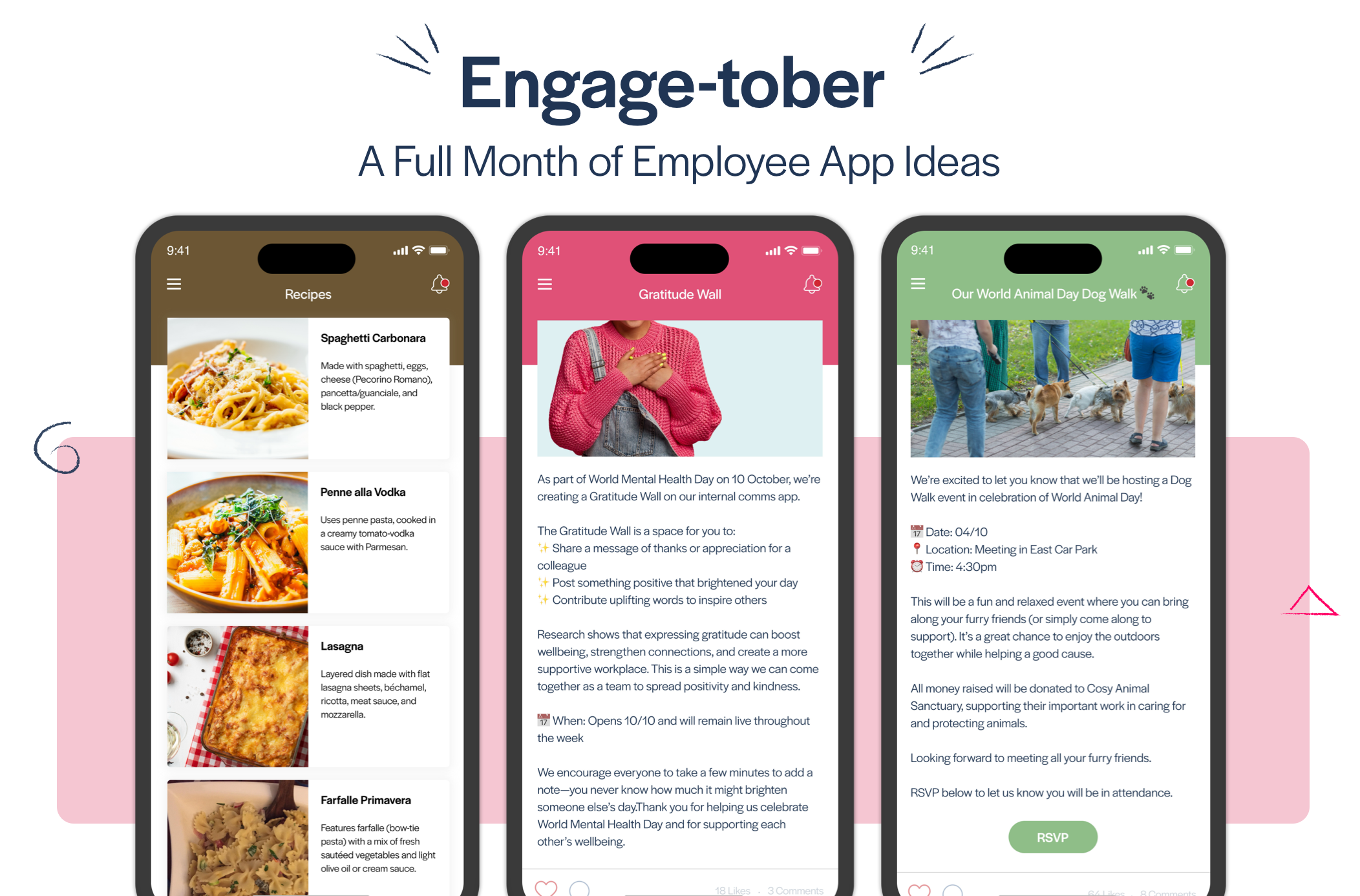
Blog
Create Content Your Colleagues Will Actually Read and Share
In today's digital and social world, we all have a wide range of apps and content to view anytime from our own phones. Yet, your job is to create interesting, engaging content that competes with these apps. It's therefore critical to get the content right.

Producing more content on its own is not better, and content just for the sake of content certainly won’t get the attention of your colleagues. So how can you create content that competes with other apps and captures the interest of the very people you need to communicate with, despite so much competition? And how do you create content that not only gets noticed, it also gets shared?
Start by asking yourself four important questions:
First, what are the key points that people need to receive? Sometimes the message gets lost in the desire to be engaging. If you are just focused on attention-grabbing, your audience may be confused or may miss the point entirely. Identify the message in clear and concise terms.
Second, what are your colleagues’ current pain points in their roles? Anytime you’re struggling to identify topics, it helps to understand what struggles or issues people are facing when they come to work every day.
Third, how do you want your audience to feel and react? Do you want them to feel informed, plain and simple? Do you want them to feel reassured in the face of a crisis? Do you want them to feel heard and valued in their role? Do you want them to be more motivated?
Forth, what do you want your audience to do with the information? If you understand what you want your readers and listeners to do next, that helps guide your content.
Next, make the message stick with the right delivery
You’ve identified the core message, you know the reaction you want to evoke, and you’ve determined what you want your audience to do. With that foundation, you need to select the best way to deliver the message so that it gets noticed, absorbed, and shared.
When creating and delivering internal communications content that sticks, it can help to think less like a corporate employee and more like a marketer or writer. Here are seven of our favorite approaches to content—borrowed from the marketing and writing professions—that can be adopted for internal communications.
#1 Meet your audience where they already are.
What types of content and on which channels and devices do they typically gravitate toward in their personal lives? Do they prefer email? Social media? Which platforms? Are they more likely to consume videos? What do they tend to share? No marketer would ever try to formulate and deploy a campaign without understanding some fundamental things about their audience’s preferences and habits, and Internal Communications should seek to do the same.
#2 Tell stories.
Don’t just report on corporate performance or departmental developments. Find the stories that are behind said performance or developments. Marketers and journalists are particularly good at spinning data into compelling stories. Stories are all around you—in the lives of your organisation’s employees, in the impact your particular service or product has on the community, and so on.
An excellent approach, taken by some of our clients, is to write what's happening from the perspective of the people in the business it's impacting. Telling it through the eyes of those who are closest to it, what they think about it and how it makes them feel. This approach is much more engaging, and we can tell this by looking at the usage statistics across these client's apps.
Quick example to illustrate the difference between writing from a 'fact' perspective and a 'think and feel' perspective.
Scenario - You have a new IT system launching in the next few weeks, this is something you want to write about and share.
Which of the two titles below would get more engagement?
Fact title - New Information about our IT System for all of our Support Team.
Think and feel title - Ciara from Support tells-all about our IT System roll out.
#3 Build suspense.
A hint of mystery is part of storytelling, and can be used effectively to create excitement in your internal communication. So-called “anticipation marketing” can be deployed as part of an internal comms strategy to tease a big launch or a positive change to the employee experience, for example. Drop bread crumbs along the way to keep interest, leading up to the big reveal.
#4 Make it a game.
Perhaps you can gamify solving the mystery, awarding points to those who find and solve clues. Or use other digital-based games—scavenger hunts, puzzles, competitions—that award individuals or teams for participating in employee training or other initiatives. You can even award badges for sharing content. One report found that 83% of employees felt more motivated when their company training was gamified.
#5 Let employees create content.
User-generated content is another major tool used by marketers. When team members have the opportunity to create content, it can sometimes feel more authentic and “from the trenches,” (vs. feeling like it’s coming from a corporate office). That naturally lends itself to more shares. Assign specific individuals or teams to report on stories, achievements, or projects from their location, or to contribute to a broader campaign that highlights various departments.
#6 Make it relatable.
You know that meme that was so relatable, you couldn’t help but repost it? One study found that 55% of people ages 13-39 share memes on a regular basis. Take advantage of that fondness for the visual language and create your own gifs, info-graphics or memes that illustrate the message you want to communicate internally. (Just be careful to be culturally sensitive and consistent with your company culture, of course.) Then watch the comments, reactions, and shares roll in.
#7 Give it a satisfying ending.
Include a call to action, setting clear expectations so your colleagues know exactly what you expect them to do. Even if the primary action you’d like them to take is to share the information, make sure your content includes that all-important CTA. Even better, use technology that enables easy sharing.
Next Steps…
The right communications partner and platform can help you and your team create amazing content. Schedule some time with us to learn how an employee communications app from Thrive can help you connect with your colleagues and inspire content sharing. If you're existing Thrive client and need more hints and tips we would love to chat more also.









